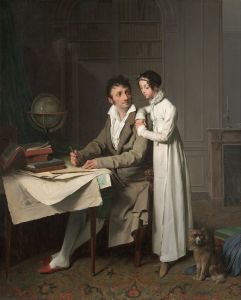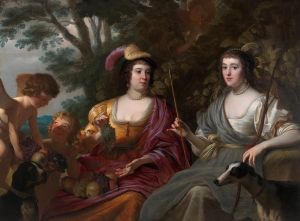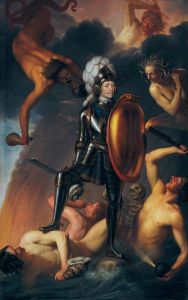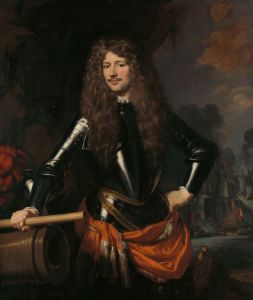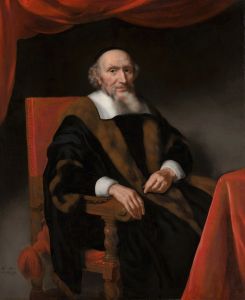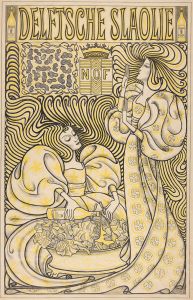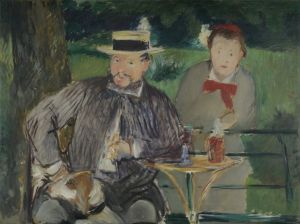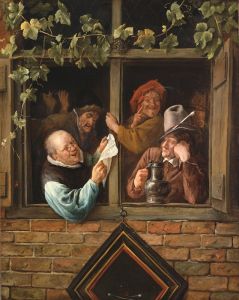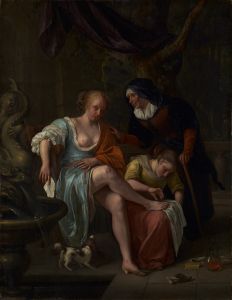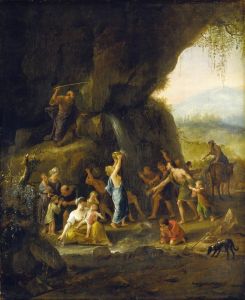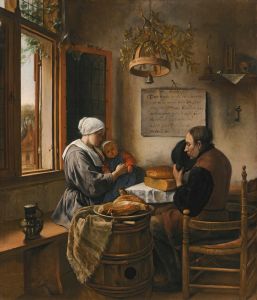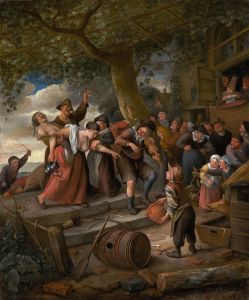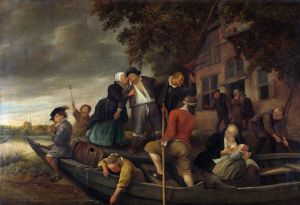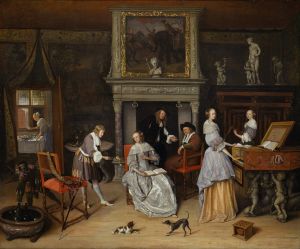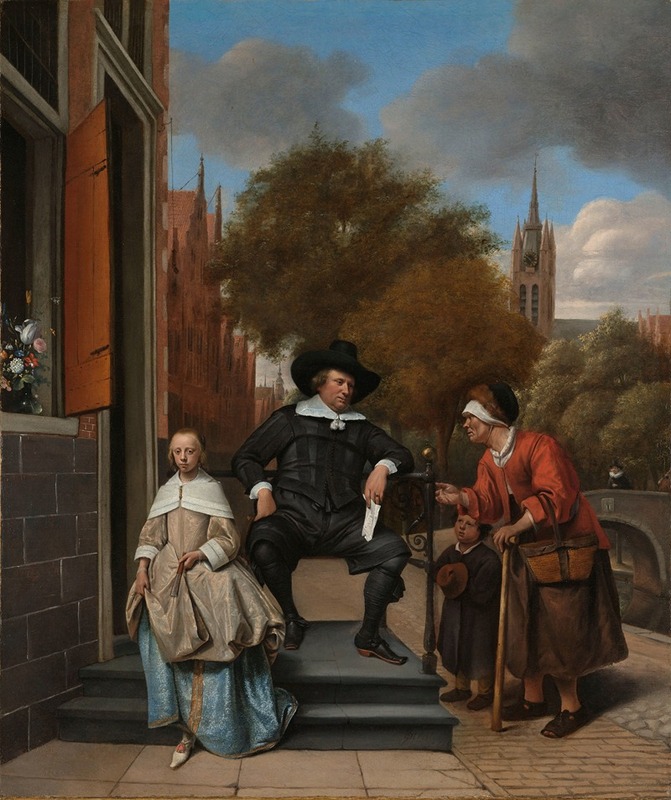
Adolf and Catharina Croeser, Known as ‘The Burgomaster of Delft and his Daughter’
A hand-painted replica of Jan Steen’s masterpiece Adolf and Catharina Croeser, Known as ‘The Burgomaster of Delft and his Daughter’, meticulously crafted by professional artists to capture the true essence of the original. Each piece is created with museum-quality canvas and rare mineral pigments, carefully painted by experienced artists with delicate brushstrokes and rich, layered colors to perfectly recreate the texture of the original artwork. Unlike machine-printed reproductions, this hand-painted version brings the painting to life, infused with the artist’s emotions and skill in every stroke. Whether for personal collection or home decoration, it instantly elevates the artistic atmosphere of any space.
Adolf and Catharina Croeser, Known as ‘The Burgomaster of Delft and his Daughter,’ is a painting by the Dutch Golden Age artist Jan Steen, created in 1655. This artwork is considered one of Steen's most refined and detailed genre paintings, showcasing his ability to capture both individual character and social context. The painting is currently housed in the Rijksmuseum in Amsterdam, the Netherlands.
The painting depicts Adolf Croeser, a wealthy and prominent citizen of Delft, seated on a stone bench outside his home. He is accompanied by his daughter, Catharina, who stands beside him. Adolf is dressed in fine, dark clothing with a fur-lined cloak, signifying his status and wealth. Catharina wears an elegant dress and holds a fan, further emphasizing the family’s affluence. The figures are portrayed with meticulous attention to detail, highlighting their facial expressions and attire.
In the background, the architecture of Delft is visible, providing a sense of place and grounding the scene in a specific urban setting. On the left side of the composition, a woman and a child, dressed in modest clothing, approach Adolf and Catharina. This contrast between the wealthy Croeser family and the less fortunate figures creates a subtle commentary on social hierarchy and economic disparity in 17th-century Dutch society.
Jan Steen is best known for his lively and often humorous depictions of everyday life, but this painting stands out for its more formal and restrained composition. It is believed to have been a commissioned work, which may explain its departure from Steen’s typical style. The painting demonstrates Steen’s skill in portraiture and his ability to convey social dynamics through visual storytelling.
The title of the painting, ‘The Burgomaster of Delft and his Daughter,’ is somewhat misleading, as there is no evidence that Adolf Croeser held the official title of burgomaster (mayor). Instead, he was a wealthy merchant and a member of Delft’s elite. The title may have been a later addition, reflecting the perceived status of the figures rather than their actual roles.
This painting is a valuable example of Dutch Golden Age art, combining elements of portraiture, genre painting, and social commentary. It provides insight into the culture and society of 17th-century Delft while showcasing Jan Steen’s artistic versatility and technical skill.





